During the Sixties, Americans imported Mini cars and miniskirts from Swinging London, while Barbie innovated a “mini” all her own: the cramped accommodations she and her social circle favored in the second half of the decade. We got our first taste in the 1965 episode with the Sears exclusive “Deluxe” house; in the following year that house came back in a bold new visual scheme, its interior completely redesigned.
Barbie Family Deluxe House
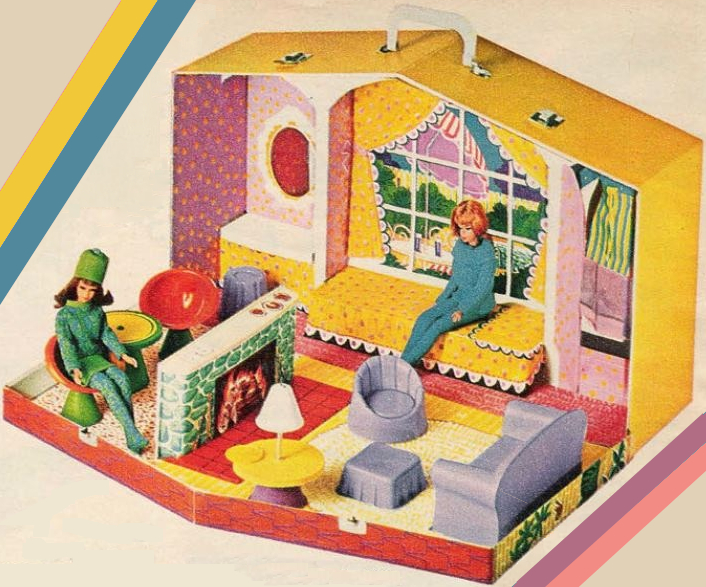
The new layout was less constricting, reducing the kitchen, pushing the bedroom to the back wall and separating the remaining space into sitting area and breakfast nook with a divider that doubled as a fireplace, on the living room side, with galley kitchen depicted on the breakfast nook side.

A double-sided fireplace could have been cuter, but Barbie’s got to eat.
Inside the house, mod aesthetics are apparent in the space-age breakfast nook chairs and living room side table; at least one other innovation distinguishes this play set as the start of Barbie’s mod housing arc:
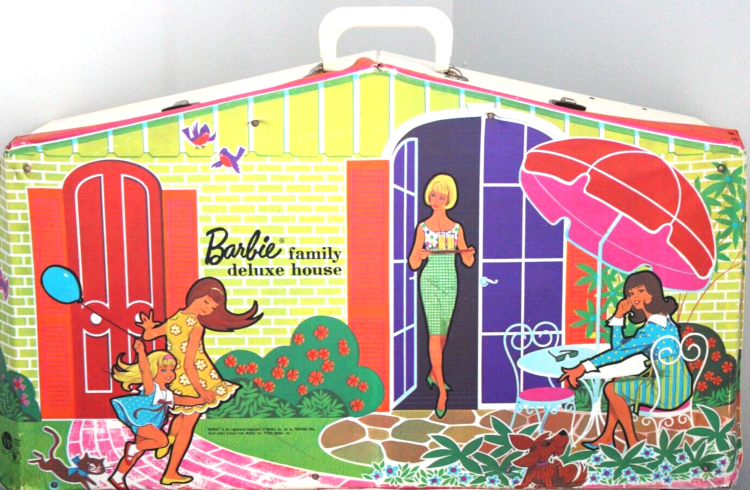
While last year we could see Barbie and Skipper through the “window” on the case exterior, this year the characters are portrayed outside the house, enjoying its outdoor spaces. Thus began a mod-era standard of depicting Barbie and friends recreating on the outsides of their houses, marking yet another intersection of Barbie’s built environment with her illustrations.
It was this mod-flavored ’66 Deluxe House, and not the original ’65 version, that inspired a 2007 Hallmark ornament.
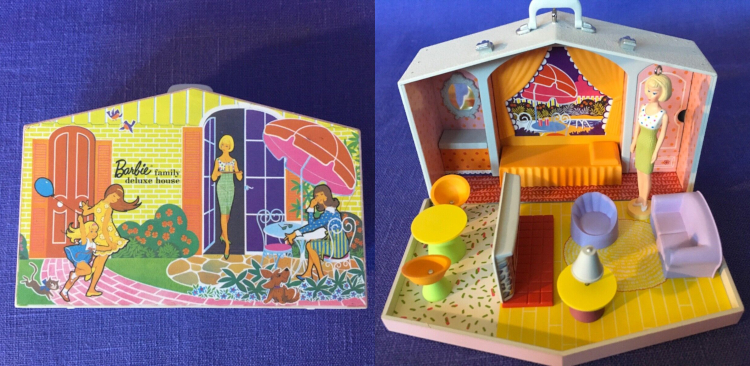
Francie House
Only Sears had the Family Deluxe House, but any retailer could carry Francie’s House–or “Contemporary Room, completely furnished to meet the needs of these swingin’ dolls,” as the catalog shown below described it–in 1966.
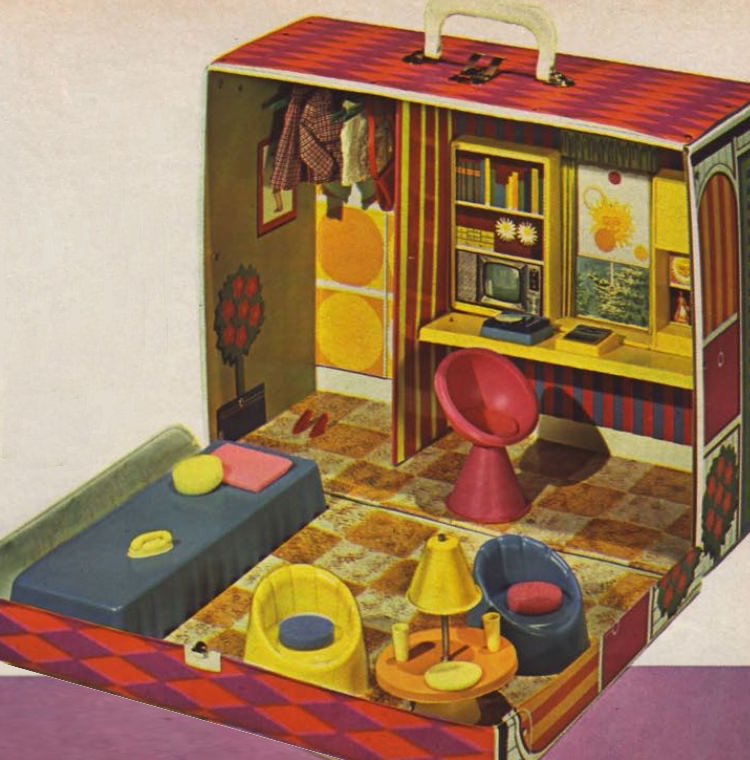
Francie’s furniture was molded in place, including a “typewriter,” centered on the desk, and a kind of uninspiring television represented on the shelves. Fully mobile/removable parts of the set included the desk chair, pillows, telephone, and phonograph (looks like the one that came with the Dance Party ensemble–Francie had so many record players!). The mod trend is evident in the allover bright color scheme and the psychedelic sun decorations around the desk. The floor looks absolutely filthy, but it’s actually meant to suggest funky, tile-patterned shag carpet. In the product image above, there appears to be a little Francie illustration partially hidden in the closet. On closer examination, she may be doing a bit of flat-footed shimmying:
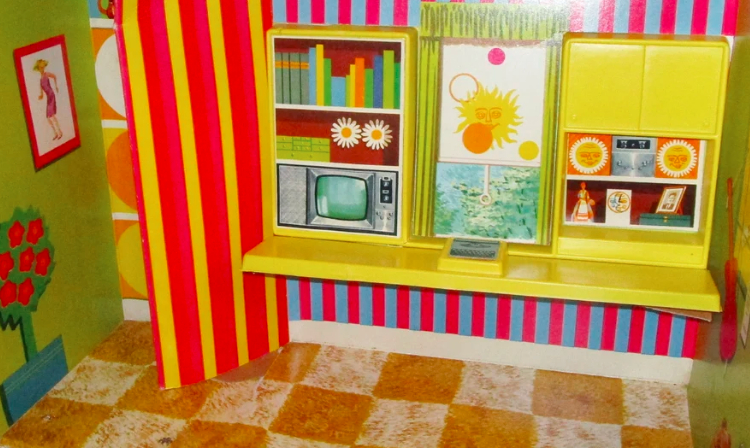
Details of Francie’s house. Source: Fallsavevintage on Etsy.
The exterior puts this case right on the borderline threshold in terms of rendering the characters outdoors, as Francie is shown standing just inside the doorway, and yet disconcertingly large in proportion to the doorway, almost as if she were closer to the viewer.
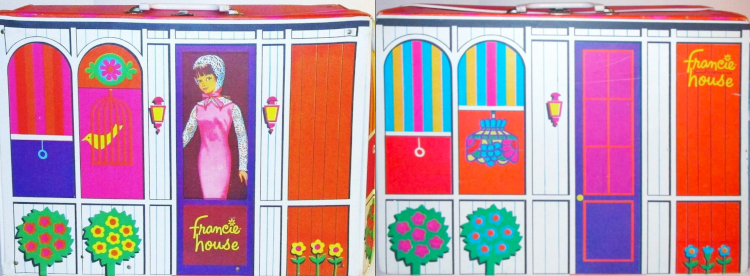
Front and back views of the “francie house.” Source: Fallsavevintage on Etsy.
The same visual trick was used to chilling effect in Alejandro Amenabar’s 2001 gothic horror masterpiece, The Others… but I digress. Details to appreciate on the package exterior include the Tiffany pendant lamp–auguring things to come–and surfeit of mod daisies, psychedelic striped blinds, and stylized caged bird.
If you read the previous entry and have been waiting with bated breath to find out whose boots we sensed approaching: they were Courreges boots! The mod era is now in full swing; we’ll see further evidence next time.

Leave a comment